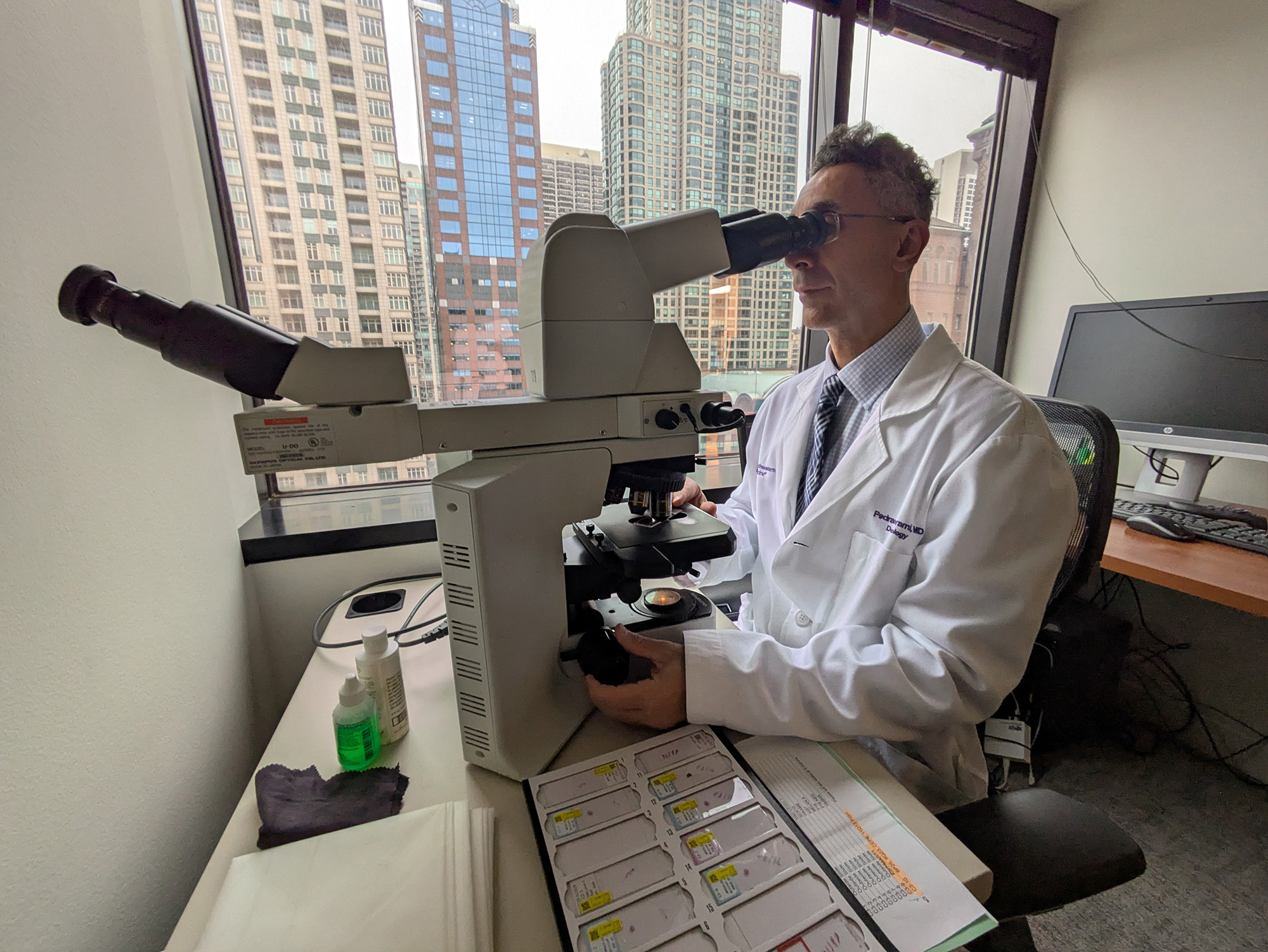
A mismatch between airway size and lung capacity, called dysanapsis, is a strong risk factor for chronic obstructive pulmonary disease, according to a study published in JAMA.
Much of what contributes to risk of chronic obstructive pulmonary disease (COPD) is still unknown, but taking dysanapsis into account could improve diagnosis and treatment, according to Norrina Allen, PhD, ’11 GME, associate professor of Preventive Medicine in the Division of Epidemiology and a co-author of the study.
“Assessment of dysanapsis using computed tomography [CT] may aid in COPD prevention efforts by identifying high-risk patients,” said Allen, who is also associate professor of Pediatrics and director of the Center for Epidemiology and Population Health at the Institute for Public Health and Medicine (IPHAM). “In addition, dysanapsis significantly predicts progression of COPD among smokers and thus could be used to guide clinical decision making.”
COPD, which also includes conditions like chronic bronchitis and emphysema, affects more than 10 million adults in the United States. While smoking is one known risk factor, declining rates of smoking have not been not matched with a corresponding decrease in COPD incidence, and other favors such as secondhand smoke or environmental pollutants likewise fail to fully explain the 25 percent of COPD cases in non-smokers, according to previous studies.
Some previous analyses pointed to risk due to low baseline lung function from birth as the culprit. Dysanapsis is a developmental mismatch with airways that are undersized compared to their lung capacity, which reduces lung function and makes it a prime suspect for COPD risk, according to Allen.
To investigate, a group of scientists including Allen launched a retrospective analysis of two large samples: the Multi-Ethnic Study of Atherosclerosis (MESA) Lung Study and the Subpopulations and Intermediate Outcome Measures in COPD Study (SPIROMICS), totaling more than 5,000 patients.
Patients underwent a computed tomography (CT) scan of their chest at initial assessment, allowing investigators to determine their airway-to-lung capacity ratio, the primary measure of dysanapsis. Statistical analysis showed that dysanapsis was significantly associated with COPD risk among older adults, with a lower airway-to-lung ratio associated with a higher incidence of COPD.
Surprisingly, dysanapsis was even more predictive of COPD than smoking, underscoring its considerable impact over the lifespan.
While the true prevalence of dysanapsis in the larger population is unknown, Allen noted that clinicians should consider dysanapsis as a potential risk factor for COPD, especially among non-smokers. In addition, these findings are another in a long line of newly discovered chronic disease risk factors that begin at birth, Allen said.
“It is becoming increasingly clear that for COPD — as for many other common chronic diseases — early life development plays a critical role in the risk of disease later in life,” Allen said.






